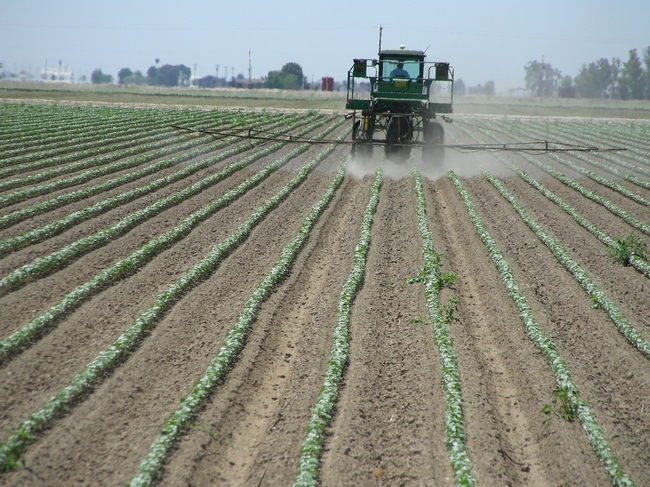It never ceases to amaze me how controversial the issue of genetically engineered crops is. It is probably one of the polarizing issues of our time. Many people's beliefs on the subject are so firmly engrained that there is no way that their opinion on the subject can be altered—even a tiny bit. Oftentimes, you hear people with differing viewpoints using the same issue to further their argument. The issue I am referring to is pesticide use (herbicides and insecticides). Opponents of genetically-engineered crops (most often referred to as GMO's by those against the technology) often claim that the use of GMO crops has resulted in increased pesticide use, while those in favor of genetically-engineered (GE) crops assert that the use of GE crops has led to a decrease in pesticide use.

A study was recently published where they examined, on a global scale, the impact of the adoption of GE crops on herbicide and insecticide use (Brookes G, Barfoot P: Key environmental impacts of global genetically modified (GM) crop use 1996–2012. GM Crops Food. 2014 Mar 11;5(2). The study is fascinating and the details are far too complicated to discuss in a blog like this; I would encourage readers to look at the original paper. One of the most interesting concepts presented in the paper is how they evaluate herbicide (and insecticide) usage. The most common way to examine pesticide use changes with GE crops compared with conventional crops is simply to consider the volume applied. However, as we all well know, herbicides and insecticides are not all equal in terms of their toxicity and potential for environmental impact. In other words, the toxicity of a pesticide is not directly related to the amount or weight applied. In addition to considering the amount of pesticide applied, this article also utilizes what is referred to as the Environmental Impact Quotient (EIQ), which was developed at Cornell University by Kovach et al. This system integrates environmental effects using toxicity and environmental exposure data related to potential impacts on farm workers, consumers and the environment in order to develop a single value for individual pesticides which is then multiplied by the amount of pesticide active ingredient applied. This EIQ methodology provides a much more meaningful assessment of the impact of GE crops on the environment than simply evaluating the pounds of active ingredient applied.
For most countries and crops, there was a net reduction in the amount of herbicide active ingredient applied compared with herbicide usage on the conventional crop. Exceptions were some of the less developed countries in South America and Africa and there was an increase in herbicide active ingredient usage. And for the crop sugarbeets there was also an increase in herbicide usage. However, overall across all countries and GE crops, there has been a net decrease in herbicide use. In addition, there has been an improvement in the associated environmental impact, as quantified by the EIQ indicator. The largest environmental gains have tended to be in developed countries.
As a result of concerns over herbicide resistance, farmers are increasingly adopting weed management strategies that incorporate a mix of herbicides. Consequently, the amount of herbicide active ingredient and number of herbicides used has increased compared with 5 years ago. However, over the same time period herbicide use has also increased with conventional crops, as weed resistance is not unique to GE crops and is an issue in conventional as well. In my opinion the bottom line of the study is that the environmental impact of GE crops in most cases is improved over that of their conventional alternative counterparts in terms of the amount of active ingredient applied and more so when one considers the environmental profile as measured by the Environmental Impact Quotient (EIQ).